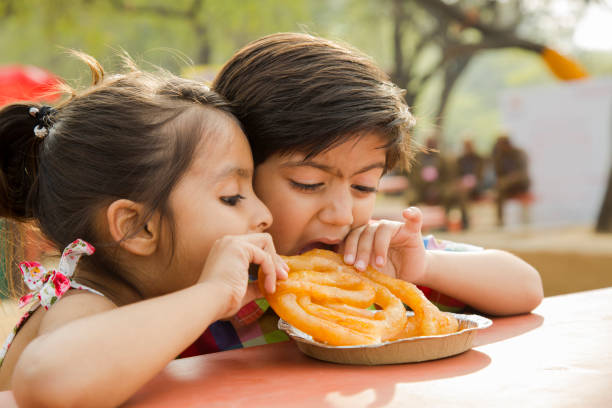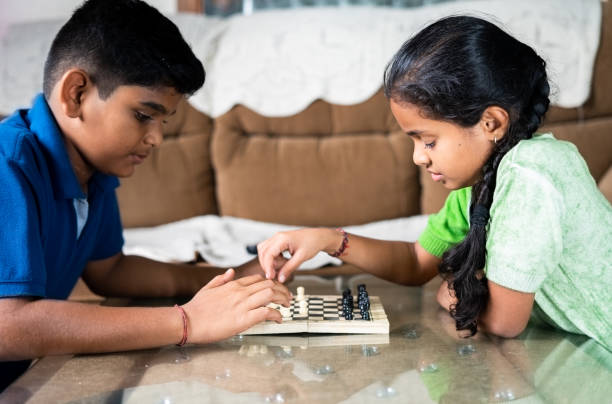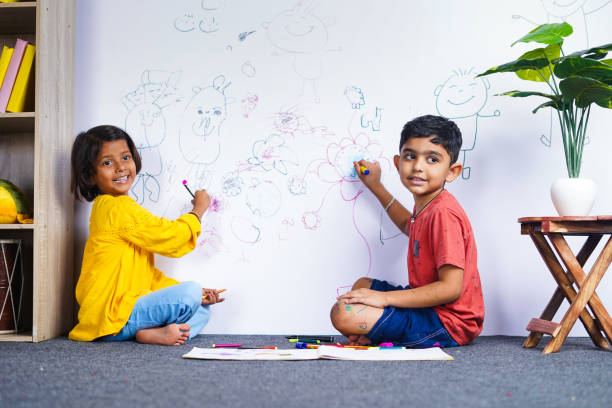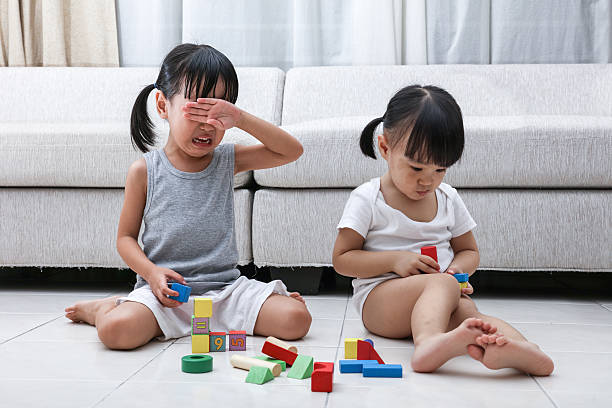Introduction:
Welcome to our comprehensive guide on managing sibling dynamics among toddlers, specifically focusing on babies. As a parenting specialist, Content Writer, and search engine optimization analyst, I understand the unique challenges and joys that come with raising multiple children close in age. Sibling dynamics play a crucial role in shaping children's social, emotional, and cognitive development, and it is essential for mothers to navigate these relationships effectively.

During the early years, siblings interact, form bonds, and learn from each other, but it is not uncommon for conflicts to arise. As babies transition into toddlers, their personalities emerge, and they begin to assert their independence. This newfound autonomy, combined with limited communication skills and a developing sense of ownership, can lead to various problems and struggles between siblings.
In this blog, we will explore various strategies and techniques to address common problems faced by mothers of toddlers, specifically focusing on babies. Our goal is to provide helpful tips and insights to foster a harmonious sibling relationship and empower mothers to navigate the joys and challenges of raising siblings in this age range. Understanding the dynamics between siblings is key to fostering a positive and supportive environment. By establishing a strong foundation and implementing effective strategies, mothers can guide their children through conflicts, encourage cooperation, and nurture a bond that will last a lifetime.
Throughout this guide, we will delve into the definition and importance of sibling dynamics, explore common problems faced by mothers of toddlers, and provide practical strategies for managing sibling relationships. By the end, you will have a wealth of knowledge and practical advice to create a nurturing and positive environment for your children. Remember, every family is unique, and there is no one-size-fits-all solution. It is important to tailor these strategies to suit the individual needs of your children and adapt them as they grow and develop. So, let's embark on this journey together and discover how to navigate the intricacies of managing sibling dynamics among babies.
Understanding Sibling Dynamics

1.1: Definition and Importance of Sibling Dynamics
In this section, we will explore the definition and significance of sibling dynamics in the context of managing sibling relationships among toddlers.
- Definition: Sibling dynamics encompass the interactions, relationships, and emotions that develop between siblings.
- Importance: Nurturing positive sibling dynamics is crucial for fostering empathy, cooperation, and lifelong bonds among children.
- Social and Emotional Development: Sibling relationships play a vital role in shaping children's social and emotional development, teaching them valuable skills such as conflict resolution, sharing, and communication.
- Cognitive Development: Sibling interactions can stimulate cognitive growth, as children learn from one another, engage in imaginative play, and develop problem-solving skills.
- Long-Term Impact: The quality of sibling dynamics during early childhood can impact future relationships and familial bonds as children grow older.
1.2: Developmental Milestones and Age Considerations
In this sub-section, we will delve into the developmental milestones and age-related considerations that affect sibling dynamics, particularly among babies aged 1 to 2 years.
- Rapid Growth and Exploration: Toddlers between the ages of 1 and 2 experience significant growth in their physical, cognitive, and social abilities. Their increased mobility, language acquisition, and curiosity can influence their interactions with siblings.
- Emerging Independence: Toddlers at this stage often strive for independence, asserting their preferences and desires. This newfound independence can occasionally lead to conflicts or power struggles with their siblings.
- Limited Communication Skills: Although toddlers are rapidly developing their language skills, their communication abilities may still be limited. This can result in frustration and miscommunication between siblings, potentially causing conflict.
- Imitation and Learning: Toddlers learn by observing and imitating others, including their siblings. They are highly influenced by their siblings' actions, making it important to model positive behavior and interactions.
Common Problems Faced by Mothers of Toddlers

2.1: Sibling Rivalry and Jealousy
In this section, we will address the common issue of sibling rivalry and jealousy among toddlers and provide strategies for managing and minimizing these challenges.
- Definition of Sibling Rivalry: Sibling rivalry refers to the competition, conflict, or resentment that can arise between siblings, often triggered by a perceived unequal distribution of attention, resources, or parental affection.
- Causes of Sibling Rivalry: Sibling rivalry can stem from a variety of factors, including limited parental attention, personality differences, developmental disparities, or a sense of territoriality.
- Impact on Relationships: Unaddressed sibling rivalry can strain sibling relationships and create negative emotional experiences for both children involved. It can also increase stress levels for parents.
- Strategies for Managing Sibling Rivalry: Encouraging open communication, establishing fair and consistent rules, promoting individual attention, and fostering a supportive family environment are effective strategies for managing sibling rivalry.
2.2: Sharing and Toy Ownership
In this sub-section, we will explore the challenges associated with sharing and toy ownership among toddlers and offer strategies to help children navigate these situations.
- Sharing Challenges: Toddlers often struggle with sharing toys and belongings due to their developing sense of ownership and desire for autonomy. Sharing conflicts can lead to frustration, tears, and disputes between siblings.
- Teaching Sharing Skills: Parents can employ techniques such as turn-taking, using timers, providing alternatives, and praising positive sharing behavior to teach toddlers the value of sharing and promote cooperation.
- Respecting Ownership: Toddlers also need to learn about respecting each other's ownership of toys. Establishing clear boundaries and rules regarding ownership and guiding children to ask for permission can help prevent conflicts.
- Modeling Sharing Behavior: Parents can model sharing behavior by sharing their own belongings and demonstrating the importance of generosity and empathy.
2.3: Sibling Bonding and Interaction
In this sub-section, we will discuss the importance of fostering sibling bonding and positive interaction among toddlers, as well as practical strategies to encourage these connections.
- Benefits of Sibling Bonding: Strong sibling bonds provide a support system, companionship, and opportunities for learning and growth. Siblings can become each other's best friends and confidants.
- Encouraging Positive Interactions: Parents can facilitate positive sibling interactions by creating opportunities for joint activities, encouraging cooperation, and providing guidance on resolving conflicts peacefully.
- Promoting Empathy and Understanding: Teaching toddlers about empathy, understanding, and emotional intelligence can enhance their ability to connect with and support their siblings. Encourage them to express care and concern for each other's feelings.
- Celebrating Sibling Relationships: Acknowledging and celebrating the unique bond between siblings through shared experiences, rituals, and family traditions can strengthen their connection and foster a sense of belonging.
Effective Strategies for Managing Sibling Dynamics

3.1: Establishing Clear Expectations and Rules
In this section, we will explore the importance of establishing clear expectations and rules for managing sibling dynamics and provide practical tips for implementing them.
- Clear Communication: Clearly communicate the expectations and rules to both siblings, ensuring they understand what is expected of them in terms of behavior, sharing, and conflict resolution.
- Consistency: Consistency is key in reinforcing the established rules. Apply the rules consistently and fairly to avoid confusion and minimize sibling conflicts.
- Positive Reinforcement: Recognize and reward positive behavior, such as sharing, cooperation, and resolving conflicts peacefully. Praise and encourage siblings when they exhibit positive interactions and adherence to the rules.
3.2: Individual Time and Attention
In this sub-section, we will discuss the significance of providing individual time and attention to each child and offer suggestions for incorporating this into daily routines.
- Quality Time: Set aside regular one-on-one time with each child to engage in activities they enjoy. This dedicated time allows you to connect individually with each child and strengthens your bond with them.
- Child-led Activities: Let each child take the lead in choosing activities during their individual time, giving them a sense of autonomy and importance.
- Equal Attention: Ensure that attention is divided fairly between siblings to prevent feelings of favoritism or neglect. Each child should feel valued and loved.
3.3: Encouraging Cooperation and Teamwork
In this sub-section, we will explore strategies to promote cooperation and teamwork between siblings, fostering a sense of unity and shared responsibility.
- Shared Activities: Encourage siblings to engage in activities that require cooperation and collaboration, such as building blocks together or solving puzzles as a team.
- Assigning Joint Tasks: Give siblings the opportunity to work together on simple household chores or projects. This promotes a sense of shared responsibility and accomplishment.
- Acknowledging Collaboration: Recognize and celebrate instances where siblings demonstrate teamwork and cooperation. This positive reinforcement encourages continued collaborative behavior.
3.4: Teaching Conflict Resolution Skills
In this sub-section, we will discuss the importance of teaching toddlers effective conflict resolution skills and provide practical techniques for promoting peaceful resolutions.
- Active Listening: Encourage siblings to actively listen to each other's perspectives and feelings during conflicts. Teach them to express their own thoughts and emotions respectfully.
- Problem-solving: Guide children through the process of problem-solving by helping them identify the issue, brainstorming potential solutions, and working together to find a mutually agreeable resolution.
- Modeling Healthy Conflict Resolution: Model healthy conflict resolution techniques, such as using "I" statements, compromising, and seeking win-win solutions. Children learn by observing their parents, so demonstrate positive conflict resolution skills in your own interactions.
Nurturing Positive Sibling Dynamics

4.1: Modeling Positive Behavior
In this section, we will explore the importance of modeling positive behavior as parents and offer suggestions on how to promote positive interactions between siblings.
- Lead by Example: Children learn by observing their parents' actions. Model positive behavior such as kindness, respect, and cooperation in your interactions with both siblings.
- Conflict Resolution: Demonstrate healthy conflict resolution skills when disagreements arise, showing siblings how to communicate effectively and find mutually satisfactory solutions.
- Sibling Interactions: Engage in positive interactions with your children, involving both siblings. Participate in activities that foster cooperation and bonding, such as family game nights or outings.
4.2: Encouraging Empathy and Understanding
In this sub-section, we will discuss the importance of fostering empathy and understanding between siblings and provide strategies to nurture these qualities.
- Perspective-Taking: Encourage siblings to consider each other's feelings and perspective. Help them understand how their actions can impact their siblings and promote empathy by asking questions like, "How do you think your sibling feels right now?"
- Encourage Supportive Behavior: Teach siblings to support and comfort each other when one is upset or in need. Foster a sense of care and compassion by emphasizing the importance of being there for each other.
- Team Building: Engage siblings in activities that require cooperation and problem-solving, such as building a fort together or working on a puzzle. These activities promote teamwork and strengthen their bond.
4.3: Celebrating Individuality
In this sub-section, we will emphasize the importance of celebrating each child's individuality and provide suggestions for fostering a supportive environment.
- Recognize Unique Strengths: Acknowledge and celebrate each child's unique strengths, talents, and accomplishments. Emphasize that everyone has different abilities and qualities that make them special.
- Respect Differences: Encourage siblings to appreciate and respect each other's differences, whether it's interests, preferences, or personality traits. Teach them that diversity adds richness to their relationship.
- Avoid Comparisons: Avoid comparing siblings or pitting them against each other. Recognize and celebrate their individual achievements without making one child feel less valued.
Conclusion:
Managing sibling dynamics among babies requires patience, understanding, and effective strategies. It is important for mothers of toddlers to acknowledge the challenges that arise in sibling relationships and take proactive steps to address them. By implementing the suggested techniques and strategies outlined in this guide, you can promote a positive sibling dynamic that will benefit your children for years to come. Remember, sibling relationships play a significant role in shaping a child's social, emotional, and cognitive development. Nurturing a harmonious sibling bond from an early age sets the foundation for lifelong companionship and support. It is worth investing time and effort into fostering positive interactions and resolving conflicts in a constructive manner.
Throughout this guide, we have discussed various common problems faced by mothers of toddlers, such as sibling rivalry, jealousy, sharing issues, and the importance of sibling bonding and interaction. We have also provided effective strategies to manage these challenges, including establishing clear expectations and rules, providing individual attention, promoting cooperation and teamwork, and teaching conflict resolution skills. Additionally, we have emphasized the significance of modeling positive behavior, encouraging empathy and understanding, and celebrating each child's individuality. These approaches create an environment where siblings learn to appreciate and support one another, building a strong foundation for a lifelong relationship.
It is essential to remember that every child and sibling relationship is unique, and it may take time to find the strategies that work best for your family. Be patient with the process, and adapt the techniques to suit your children's personalities and needs. By investing in managing sibling dynamics and promoting a positive relationship between your toddlers, you are nurturing essential life skills such as empathy, communication, and conflict resolution. These skills will benefit your children not only in their relationships with each other but also in their interactions with others throughout their lives.

In conclusion, as a mother of toddlers, you have the power to shape and guide the sibling dynamics in your household. With love, patience, and the implementation of effective strategies, you can create a nurturing environment where your children's sibling relationship thrives. Embrace the challenges as opportunities for growth and enjoy watching your little ones develop a strong and supportive bond that will last a lifetime.

